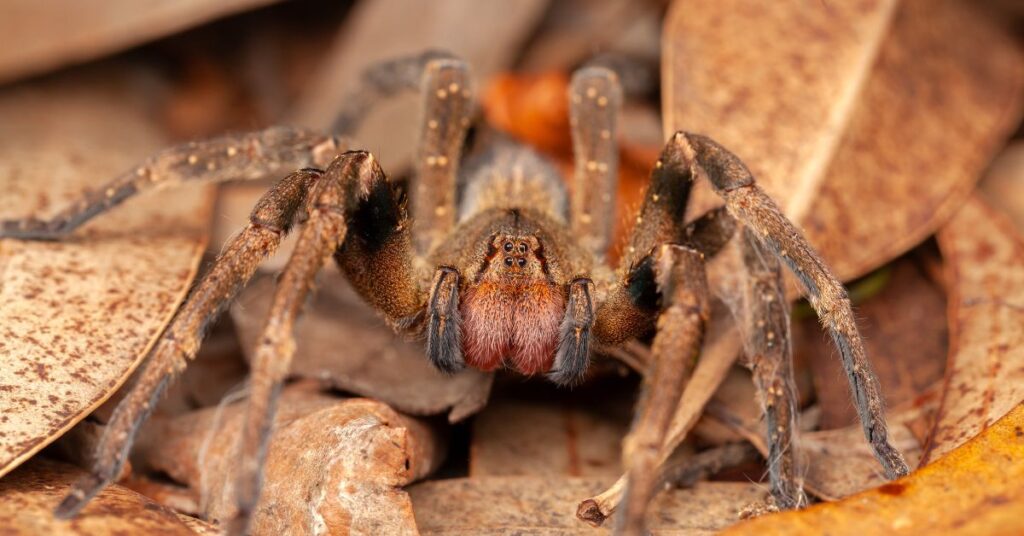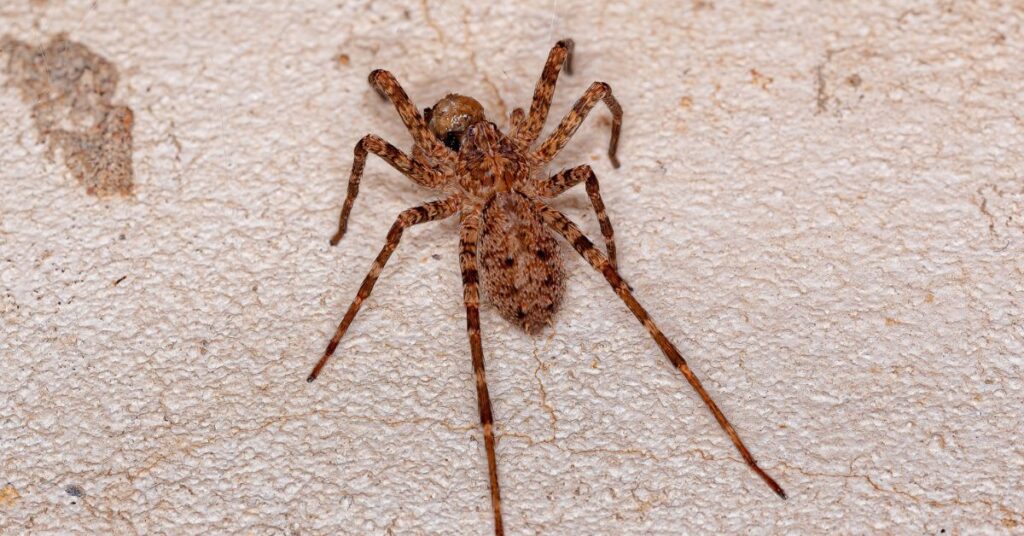If you’re an arachnophobe, look away now! The Brazilian wandering spider is one of the deadliest spiders in the world, with a venom that can cause paralysis and even death in humans.
In this article, we’ll explore everything you need to know about this venomous arachnid, from its physical characteristics and habitat to its bite symptoms and treatment options. So, let’s get started!

The Brazilian wandering spider, also known as the banana spider, is a highly venomous arachnid that can be found in various countries across South and Central America. It’s considered one of the deadliest spiders in the world due to its potent venom and aggressive behaviour, which can lead to fatal consequences if left untreated.
As humans continue to encroach on the spider’s natural habitat, it’s becoming more common to encounter these venomous creatures in urban areas.
That’s why it’s important to know what to look out for and how to avoid an encounter with a Brazilian wandering spider.
Physical Characteristics

This spider can grow up to 6 inches in leg span and has a distinct appearance that makes it easy to identify.
Its body is covered in brown or black hairs, and it has long, thin legs that are often banded with lighter and darker stripes.
Males have larger pedipalps (the “boxing gloves” at the front of the body) than females, which they use to transfer sperm during mating.
Habitat and Distribution
Brazilian wandering spiders can be found in a variety of habitats, including forests, grasslands, and even human dwellings. They are most commonly found in Central and South America, including Brazil, Costa Rica, and Peru.
These spiders are often referred to as “wandering” spiders because they do not build webs like other spider species. Instead, they roam the forest floor or hide in dark crevices during the day, making them difficult to spot.
Venom and Toxicity
The venom of these arachnids contains a neurotoxin that attacks the nervous system, causing paralysis and eventually death if left untreated.
The venom is especially dangerous to young children and the elderly, as well as those with pre-existing health conditions.
Interestingly, their venom has also been studied for potential use in medicine.
It contains a molecule that can help to treat erectile dysfunction, and is being researched as a potential treatment for other conditions such as Alzheimer’s disease and epilepsy.
Symptoms of a Bite
If you’re unlucky enough to be bitten by one of these, you’ll likely experience symptoms within a few hours. These can include:
- Intense pain and swelling around the bite area
- Nausea and vomiting
- Elevated heart rate and blood pressure
- Muscle cramps and spasms
- Difficulty breathing
Symptoms can vary in severity depending on the amount of venom injected, as well as the age and health of the person bitten. In some cases, the bite can be fatal.
Treatment Options
If you suspect that you’ve been bitten by a Brazilian wandering spider, it’s important to seek medical attention immediately.
The first step is to clean the wound with soap and water and apply a cold compress to reduce swelling. You should then try to keep the affected limb immobilized and elevated.
In severe cases, antivenom may be necessary to counteract the effects of the spider’s venom.
This is typically administered in a hospital setting, where the patient can be closely monitored for any adverse reactions.
Why Banana Spider?
These spiders acquired their other common name, “banana spider”, because it is claimed that they are occasionally found in shipments of bananas, though the number of reports is exaggerated due to common misidentifications of unrelated spiders.
A survey of spiders found in international shipments to North America revealed that only 7 of 135 spiders were Phoneutria species, six being Phoneutria boliviensis from bananas and one Phoneutria nigriventer from a shipment of electrical parts.
Interesting Facts
This arachnid is named for its habit of wandering the forest floor in search of prey, rather than building webs like other spiders.
Male spiders of this species will perform a “dance” to attract females, waving their pedipalps and vibrating their bodies to create a rhythmic sound.
In some parts of South America, the spider is considered a delicacy and is even used as an ingredient in traditional medicine.
By understanding its physical characteristics, habitat, and venom, we can better protect ourselves from encountering this arachnid in the wild.
If you do happen to be bitten, remember to seek medical attention immediately to prevent potentially fatal consequences.
The Brazilian Wandering Spider is not the only deadly spider in the world, check out our article on the Funnel-Web Spider for some more interesting spider goodness!
FAQs
Is the Brazilian wandering spider the most venomous spider in the world?
Yes, this spider is considered one of the most venomous spiders in the world.
How do I avoid encountering a Brazilian wandering spider?
The best way to avoid encountering a Brazilian wandering spider is to stay away from its natural habitat, which includes forests and grasslands. Be sure to shake out any clothing or shoes before putting them on, and keep your home clean and free of clutter.
Can you die from a Brazilian wandering spider bite?
Yes, in severe cases, a Brazilian wandering spider bite can be fatal.
Are there any natural remedies for a Brazilian wandering spider bite?
No, there are no known natural remedies for a Brazilian wandering spider bite. Seek medical attention immediately.
What should I do if I see a Brazilian wandering spider in my home?
If you see a Brazilian wandering spider in your home, do not attempt to handle it. Call a professional exterminator to safely remove the spider.
How can the venom of the Brazilian wandering spider be used in medicine?
The venom of the Brazilian wandering spider contains a molecule that can help to treat erectile dysfunction, and is being researched as a potential treatment for other conditions such as Alzheimer’s disease and epilepsy.
Are Brazilian wandering spiders found only in Brazil?
No, while the Brazilian wandering spider is primarily found in Brazil, it can also be found in other countries in South America.
How can I identify a Brazilian wandering spider?
The Brazilian wandering spider is typically brown or black in color, with long, hairy legs and a body that can be up to 2 inches in length. It has a distinctive red marking on its underside, which is often used as a warning signal to potential predators.
Can I keep a Brazilian wandering spider as a pet?
No, it is illegal to keep a Brazilian wandering spider as a pet in many countries, including the United States. Additionally, the spider’s venom makes it a dangerous animal to keep in captivity.
What should I do if I encounter a Brazilian wandering spider in the wild?
If you encounter a Brazilian wandering spider in the wild, the best course of action is to stay away from it and not disturb it. If you do get bitten, seek medical attention immediately. Remember to never attempt to handle or capture a venomous spider like the Brazilian wandering spider, as it can be extremely dangerous.
However, not all spiders are created equal. Some of them are quite docile and even friendly (ish)! We have a great article on jumping spiders HERE for example.
Until next time, stay spidery!
